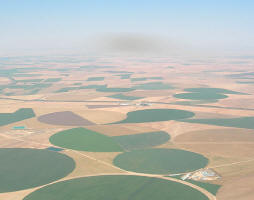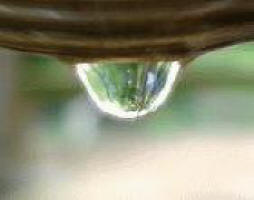 What is the true Potential for Water Saving in the European Union?
What is the true Potential for Water Saving in the European Union?
Water scarcity and droughts (WS&D) is a growing concern in Europe.
Indeed, the number of Member States that experience seasonal or long term
droughts has increased. In recognition of the acuteness of the issues caused
by water scarcity and drought in Europe, in 2006 and early 2007 the
Commission undertook an in-depth assessment of the situation across the EU.
This assessment revealed that current water management practices have a
large margin for improvement, especially with respect to their water saving
potential. Nevertheless, at this time there was no quantified information on
the potential for water saving.
In this context, in a recent study commissioned by the European Commission,
European researchers and consultants estimated the water saving potential
across Europe by 2030. The study addresses the savings that can be achieved
via technical measures. It also takes into consideration instruments such as
water pricing, labelling or drought management plans that can promote the
implementation of these measures. The main sectors using water (Agriculture,
Tourism, Households, Energy, and Industry) were analysed. Economic, social
and environmental impacts (costs and benefits) of the water saving options
were identified. The study is completed with four detailed case studies that
illustrate the implementation, feasibility and possible potential of some
water saving measures. The study is based on a large literature survey and a
summary of data from existing studies.
The main results are as follows:
Total water abstraction in the European Union (EU-27) has been
estimated at 247,000 million m3/year. The sector that uses the most water is
energy production, which represents 44% of the total water abstraction in
Europe. This sector is followed by agriculture (24%), public water supply
(17%) and industry 15%).
In the public water supply sector (including households, the public
sector and small business), water savings of up to 50% could be achieved by
reducing leakage in water supply networks, introducing water saving devices
and using more efficient household appliances.
As regards agriculture, important water savings could be achieved with
improvements in irrigation infrastructure and technologies. For example,
improving the conveyance efficiency of irrigation systems could result in
savings of 10% to 25%, improving application efficiency in water savings of
15% to 60%, 30% from changes in irrigation practices, up to 50% by using
drought-resistant crops, and about 10% from the reuse of treated sewage
effluent. The potential water savings from irrigation could amount to up to
43% of the current volume abstracted for agriculture.
In industry, the introduction of technical measures such as changes in
processes leading to less water demand, higher recycling rates or the use of
rainwater, could lead to savings of between 15% and 90% with a global
estimate of 43% of today's water abstraction.
The tourism sector can be a key user of water in certain areas of
Europe. This sector has the potential to reduce its consumption by a maximum
of 80%-90% though the application of technical measures such as the
installation of newer appliances in guest rooms, cafe areas, kitchens, etc.
Overall, the results show significant possibilities for water savings by
avoiding overexploitation, non-conventional water production and promoting
integrated water saving measures. The conclusions of this study offer
practical tools for the development of a European strategy for water
savings.
European Commission DG Environment Report “EU water saving
potential”.
Additional
information: The EC’s LIFE-Environment programme has also funded several
projects that support actions for water savings. One example is OPTIMIZAGUA
(LIFE03 ENV/E/000164), which experimented with artificial intelligence
integrated in traditional systems of water control (see
project summary, website and
layman’s report). Another project based in Estonia (LIFE00
ENV/EE/000922) demonstrated a new more efficient way of addressing the
current problems in water supply and sewage systems, typical to the
settlements in former Soviet countries, whilst bringing the quality and
quantity of drinking water into step with EU water policy and national
legislation (see
project summary and
layman’s report).
| Contact information |
Science Env Policy
(email: science-env-policy@biois.com) |
|---|---|
| News type | Inbrief |
| File link |
http://ec.europa.eu/environment/water/quantity/pdf/water_saving_1.pdf |
| Source of information | Science Env Policy |
| Keyword(s) | EU-LIFE |
| Subject(s) | AGRICULTURE , DRINKING WATER AND SANITATION : COMMON PROCESSES OF PURIFICATION AND TREATMENT , ENERGY , FINANCE-ECONOMY , HYDRAULICS - HYDROLOGY , INFORMATION - COMPUTER SCIENCES , METHTODOLOGY - STATISTICS - DECISION AID , NATURAL MEDIUM , POLICY-WATER POLICY AND WATER MANAGEMENT , PREVENTION AND NUISANCES POLLUTION , RISKS AND CLIMATOLOGY , SANITATION -STRICT PURIFICATION PROCESSES , WATER DEMAND , WATER QUALITY |
| Relation | http://www.emwis.net/topics/WaterScarcity |
| Geographical coverage | EU |
| News date | 11/10/2007 |
| Working language(s) | ENGLISH |
 you are not logged in
you are not logged in





